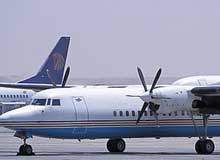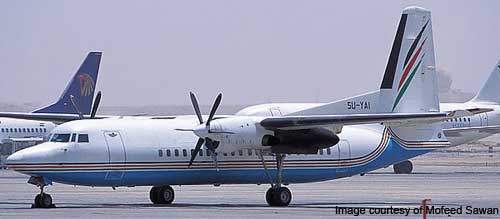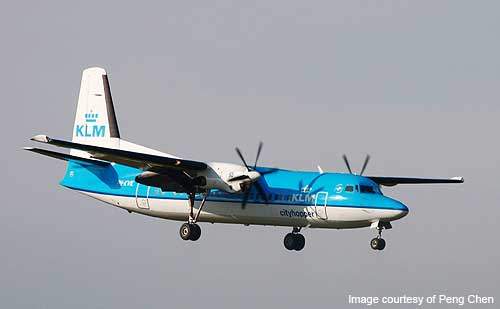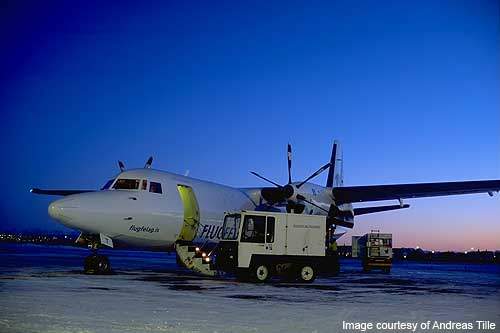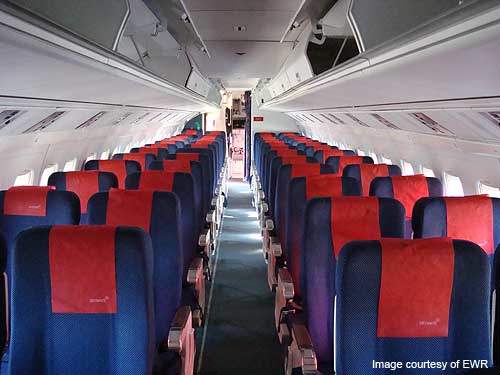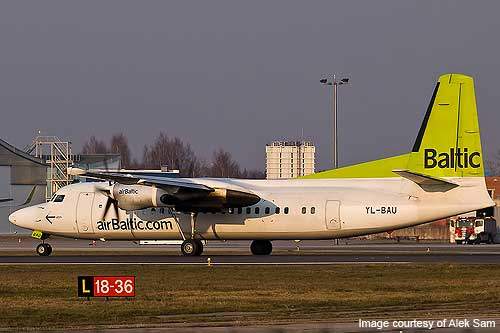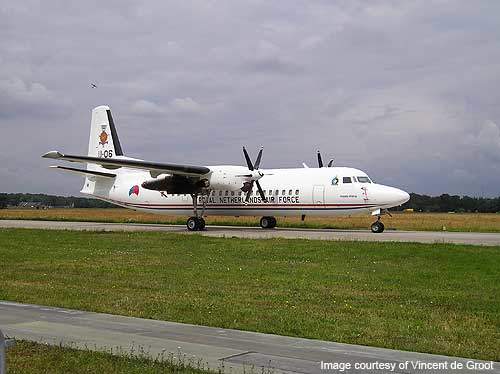The F-50 is a twin engine passenger airliner designed and manufactured by Fokker Aircraft Company (FAC) of Netherlands. It is derived from the Fokker F27 Friendship aircraft.
A total of 213 F-50s were built to date and 168 are operational worldwide.
Variants
The F-50 has two variants: F27 Mark 050 and F27 Mark 0502.
Also known as the F-50-100, the F27 Mark 050 is the advanced version of the original F-50. The variant features cockpit instrumentations, electronic flight instrumentation systems (EFIS), engine and propeller controls and crew warning systems.
The F27 Mark 0502 is the upgraded model of the F27 Mark 050. It features a reconfigured cabin interiors and aft emergency exit doors. A total of six F27 Mark 0502 aircraft were produced and deployed in Royal Netherlands Air Force (Two), Singapore Air Force (Two) and Brunei (Two).
Orders and deliveries
Orders received from various customers encompass Malaysia Airlines (10) (now operated by Maswings and Firefly), Denim Air (12), Skyways Express (18), VLM Airlines (20) etc.
The Republic of Singapore Air Force acquired F-50 maritime patrol aircraft from FAC in 1991. The aircraft was deployed in the Gulf of Aden in April 2011 to endorse international counter piracy attempts. It will execute maritime aerial surveillance to identify and investigate suspicious vessels.
Design
FAC started designing the F-50 in November 1983. The aircraft was designed to operate on rough airfield or dirt runways and in adverse weather conditions. It was constructed with carbon composite materials including glass fibre, carbon and aramid to lower its overall weight.
The aircraft is fitted with three doors as well as an emergency exit door for passenger boarding or disembarkation. It is also equipped with an optional door at the left hand corner of the rear fuselage to load or unload freight.
Development
FAC developed two prototypes of which the first took its maiden flight in December 1985, followed by the second in April 1986. The first production aircraft took into the sky in February 1987. It was certified by the Dutch Aviation Authority RLD in May 1987. The F-50 entered service with Lufthansa Cityline (DLT) in August 1987.
The F-50 was developed by modifying the F27-500 aircraft. The modifications included incorporating modern avionics, engine management systems, ailerons, Foklet wingtips and a two-wheeled nose gear. Replacing the Rolls-Royce engine with the most fuel efficient PW125B engine was a major modification which enabled the aircraft to achieve 12% higher cruising speed and decrease fuel consumption.
Production of the F-50 was terminated in March 1996 due to Fokker’s bankruptcy. Ethiopian Airlines received the final F-50 in May 1997.
Flight deck
The F-50 features a glass cockpit to accommodate two crew members including pilot and co-pilot. The flight deck is equipped with EFIS, primary flight display (PFD) and secondary flight display (SFD). The PFD renders primary flight data while the SFD offers navigational information.
Cabin
The F-50 boasts a spacious and luxurious cabin with enough leg space for passengers on-board. The cabin can conciliate 58 passengers in two seating areas. It is fitted with 44 small rectangular shaped windows to render clear visibility to the passengers.
The cabin is 15.96m-long and 2.5m-wide. Its height is 1.96m. The cabin volume and baggage volume of the aircraft are 8m³ and 14m³ respectively.
Engines
The F-50 is powered by two PW125B turboprop engines, each producing 1,864kW of output power. The engine is designed and manufactured by Pratt & Whitney Canada, US. It is driven by six bladed Dowty Rotol propeller made up of aluminium. The propeller can rotate at a constant speed of 1,200rpm.
An off-set reduction gear box optimises the output speed to enhance the power and minimise the propeller noise. The engine is also fitted with a reverse flow combustor, electronic engine control (EEC) and single stage low pressure turbine.
The length and width of the engine are 2.1m and 0.66m respectively. The height is 0.83m.
Performance
The F-50 can fly at a maximum speed of 532km/h. Its stall speed is 453km/h. The range and service ceiling are 2,678km and 7,620m respectively.

